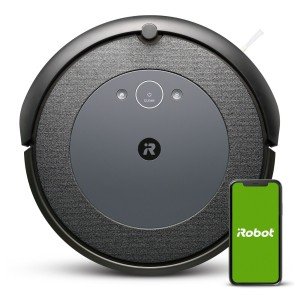The Rise of Robotic Vacuums: A Comprehensive Overview
In today's hectic world, innovation is consistently developing to make our lives much easier, and the home cleaning segment has experienced one of the most noteworthy improvements: the robotic vacuum. This intelligent gadget not just saves time and energy but likewise ensures a cleaner home environment with minimal manual effort. This post dives into the remarkable development of robotic vacuums, how they work, their advantages and drawbacks, market patterns, and future directions.
The Evolution of Robotic Vacuums
Robotic vacuums have made great strides since their beginning in the late 1990s. The first commercially offered robotic vacuum was presented in 1996, followed by numerous designs, each developed with escalating sophistication and features. Here is a brief timeline of robotic vacuum evolution:
| Year | Occasion |
|---|---|
| 1996 | Release of the first robotic vacuum (Electrolux's Trilobite) |
| 2002 | iRobot Roomba is launched, making robotics mainstream |
| 2010 | Intro of sophisticated mapping and navigation functions |
| 2017 | Integration of AI and smart home compatibility |
| 2022 | Introduce of highly advanced models featuring self-emptying dustbins |
How Robotic Vacuums Work
Robotic vacuums make use of a combination of sensing units, algorithms, and artificial intelligence to browse areas efficiently. Here's how they run:
- Navigation: Most robotic vacuums utilize a series of sensing units to detect barriers and navigate around furniture. Some high-end designs incorporate LIDAR (Light Detection and Ranging) technology to develop comprehensive maps of the environment.
- Cleaning Mechanisms: They are equipped with turning brushes and suction mechanisms to collect particles from numerous surfaces. Depending on vacuum deals , they can transition between carpets and tough floorings effortlessly.
- Smart Features: Many modern-day robotic vacuums are Wi-Fi allowed, enabling users to manage them from another location through a smartphone app. Functions commonly consist of scheduling, drawing up cleaning paths, and integration with other smart home gadgets.
- Self-Maintenance: High-end units might feature self-emptying capabilities, where the robot can dock itself to a base that collects dust and particles without human intervention.
Advantages of Robotic Vacuums
Robotic vacuums have garnered tremendous popularity, and for good factors. Here are a few of the most significant benefits:
- Time-Saving: Automating the cleaning process enables users to take part in other significant activities.
- Effective Cleaning: Regular cleaning can be quickly achieved by scheduling the robot to clean everyday or weekly, keeping dirt and allergens at workable levels.
- Compact Design: Their little size allows them to fit under furniture and in hard-to-reach locations.
In spite of their advantages, robotic vacuums also come with restrictions:
- Limited suction power: While they work for maintaining clean floorings, they may not match the deep cleaning of conventional vacuums.
- Battery life: Most designs require to return to their dock after a particular duration of use.
- Preliminary expenses: High-quality robotic vacuums can be costly, though prices have been reducing with advancements in technology.
Existing Market Trends
The market for robotic vacuums is broadening rapidly. According to a recent marketing research report, the international robotic vacuum market is expected to reach ₤ 7.2 billion by 2027, growing at a CAGR of 23.5%, driven by numerous elements:
Increased Adoption of Smart Home Devices
The rise of smart home technology has actually motivated customers to integrate robotic vacuums into their households. Many robotic vacuums work flawlessly with home assistants like Amazon Alexa and Google Assistant, streamlining their operation.
Advances in Robotics and AI
As the technology behind robotic vacuums evolves, designs are being equipped with much better navigation systems, AI algorithms for learning personal cleaning routines, and improved functions for specific floor types.
Focus on Health and Hygiene
The increased awareness of tidiness and hygiene, particularly due to recent global events, has driven consumers to invest in gadgets that regularly eliminate dust, irritants, and animal hair from their homes.
Future Directions
As innovation advances, robotic vacuums are anticipated to develop even more, including functions that increase their efficiency in homes. Prepared for developments consist of:
- Improved AI Learning: With advancements in machine knowing, future models will be better at understanding their environment and adapting to the requirements of their owners.
- Multi-Purpose Design: Potential future models may include features for mopping, sanitizing, and air purification in addition to vacuuming.
- Sustainability: As eco-consciousness rises, makers are likely to concentrate on energy efficiency, recyclable products, and sustainable production practices.
FAQs About Robotic Vacuums
1. vacuum robot on carpet?Yes, a lot of robotic vacuums can transition between different floor types, including carpets and tough floors. 2. How typically must I run my robotic vacuum?It depends
on your family's cleaning needs, but lots of users
arrange their robotic vacuums to run day-to-day or every number of days. 3. Are robotic vacuums worth the investment?For numerous customers, the time conserved and benefit offered by robotic vacuums makes them rewarding,
specifically for busy homes. 4. Can I control my robotic vacuum remotely?Most modern-day robotic vacuums can be managed through a smart device app, permitting scheduling and monitoring from anywhere. 5. Do I still need a conventional vacuum cleaner?While robotic vacuums efficiently handle day-to-day cleaning, a traditional vacuum may still be needed for deep cleans or toughermesses. The improvement of robotic vacuums reflects a significant leap in automating household chores, combining ingenious innovation with easy to use operation. As the trend toward smart homes continues and customer expectations progress, robotic vacuums will likely keep improving, providing ever-greater benefit and efficiency in preserving clean home. As property owners think about the possible advantages and restrictions of these devices, it is clear that robotic vacuums have solidified their reputation as important tools in contemporary home management.

